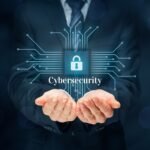Table of Contents
Introduction
Cybersecurity is no longer just a niche concern for IT departments—it’s a critical global issue that affects individuals, businesses, and governments alike. As technology evolves, so do the threats that challenge the security of digital assets. From AI-driven attacks to quantum computing threats, the cybersecurity landscape is undergoing rapid transformation.
Keeping up with these threats demands continuous innovation and adaptability. In this article, we’ll explore the key trends and innovations shaping the future of cybersecurity, offering insights into how organizations and individuals can protect themselves in an increasingly digital world.
1. The Growing Threat Landscape
As digital infrastructure expands, so do cyber threats. The cybercrime industry is booming, with attacks becoming more sophisticated, targeted, and damaging.
Rise of Sophisticated Cyber Threats
Cybercriminals are leveraging advanced techniques such as AI-powered malware, deepfake attacks, and automated phishing campaigns. These threats are harder to detect and more effective in bypassing traditional security measures.
Increase in Ransomware Attacks
Ransomware has become one of the most prevalent cyber threats, with attackers encrypting data and demanding hefty ransoms for decryption. The rise of Ransomware-as-a-Service (RaaS) has made it easier for cybercriminals to launch attacks without technical expertise.
Nation-State Cyber Warfare
Governments are increasingly engaging in cyber warfare, using cyberattacks as tools for espionage, disruption, and political influence. State-sponsored attacks target critical infrastructure, financial systems, and sensitive government data.
AI-Driven Cybercrime
Cybercriminals are harnessing AI to automate attacks, analyze vulnerabilities, and create highly convincing social engineering tactics. AI can generate realistic phishing emails, bypass CAPTCHAs, and even manipulate security systems.
2. Artificial Intelligence and Machine Learning in Cybersecurity
AI and machine learning are transforming cybersecurity by enhancing threat detection, automating responses, and improving overall security efficiency.
AI-Powered Threat Detection and Response
Traditional security measures often rely on predefined rules, which are ineffective against new and evolving threats. AI-based security systems analyze vast amounts of data in real-time, detecting anomalies and responding to threats faster than human analysts.
Machine Learning Algorithms for Anomaly Detection
Machine learning enables security systems to identify unusual patterns in network traffic, user behavior, and system logs. These algorithms can detect insider threats, unknown malware, and data breaches before they cause significant damage.
AI-Driven Automation in Security Operations
Security operations centers (SOCs) are leveraging AI to automate repetitive tasks, such as log analysis, threat hunting, and incident response. This reduces the workload for security teams and improves response times.
3. Zero Trust Architecture (ZTA): The New Security Paradigm
The conventional “trust but verify” security model is no longer reliable. Zero Trust Architecture (ZTA) enforces strict identity verification and access control, ensuring that no user or device is trusted by default.
Definition of Zero Trust
Zero Trust is a security framework that requires all users, inside or outside the network, to be authenticated, authorized, and continuously validated before accessing resources.
Key Principles of ZTA
- Least Privilege Access: Users are granted only the permissions necessary for their tasks.
- Continuous Monitoring: Real-time verification of user behavior and device security.
- Micro-Segmentation: Dividing networks into secure zones to limit movement in case of a breach.
Benefits of Zero Trust in Modern Security Frameworks
- Reduces the risk of insider threats and unauthorized access
- Enhances protection against advanced persistent threats (APTs)
- Improves compliance with security regulations
4. Quantum Computing and Its Impact on Cybersecurity
Quantum computing poses both risks and solutions for cybersecurity. While it has the potential to break traditional encryption methods, it also introduces new cryptographic techniques.
How Quantum Computing Threatens Traditional Encryption
Quantum computers use quantum bits (qubits) to perform calculations exponentially faster than classical computers. This could render RSA, ECC, and other encryption methods obsolete, exposing sensitive data to decryption.
Quantum Cryptography as a Solution
Quantum cryptography, particularly Quantum Key Distribution (QKD), provides an unbreakable encryption method based on the principles of quantum mechanics. It ensures secure communication by detecting any interception attempts.
The Need for Post-Quantum Cryptography
Governments and organizations are investing in post-quantum cryptography (PQC) to develop encryption methods resistant to quantum attacks. The National Institute of Standards and Technology (NIST) is actively working on post-quantum cryptographic standards.
5. Blockchain for Enhanced Security
Blockchain technology is gaining traction as a security-enhancing tool due to its decentralized and tamper-proof nature.
Role of Blockchain in Cybersecurity
Blockchain provides transparency, immutability, and decentralization, making it ideal for securing sensitive transactions and data.
Decentralization and Its Security Benefits
Unlike traditional centralized systems, blockchain eliminates single points of failure, reducing the risk of cyberattacks and data breaches.
Blockchain Applications in Identity Management and Secure Transactions
- Self-sovereign identity (SSI): Users control their data securely.
- Smart contracts: Automate and enforce security protocols without intermediaries.
6. Cloud Security Challenges and Innovations
As organizations increasingly migrate to cloud environments, cybersecurity risks in the cloud have become a major concern. While cloud computing offers scalability and efficiency, it also presents unique security challenges that require innovative solutions.
Rise of Cloud Adoption and Security Risks
The rapid adoption of cloud services has introduced new vulnerabilities, such as:
- Misconfigured cloud settings: One of the leading causes of cloud breaches.
- Data leakage: Sensitive information stored in the cloud is often a prime target for hackers.
- Insecure APIs: Cloud-based applications often rely on APIs that, if not secured properly, can become entry points for cyberattacks.
Innovations in Cloud Security
To address cloud security challenges, several innovative solutions have emerged:
- Secure Access Service Edge (SASE): A security framework that integrates network security and cloud access controls to ensure secure remote access.
- Cloud Access Security Brokers (CASB): These tools provide visibility and control over cloud applications to prevent unauthorized access.
- Cloud Security Posture Management (CSPM): A technology designed to identify misconfigurations and enforce security policies across cloud environments.
Best Practices for Securing Cloud Environments
- Implement multi-factor authentication (MFA) to prevent unauthorized access.
- Encrypt data both in transit and at rest to ensure confidentiality.
- Regularly audit and monitor cloud configurations to identify potential vulnerabilities.
- Adopt a Zero Trust security model to enhance cloud security.
7. IoT Security: Securing a Hyper-Connected World
The Internet of Things (IoT) is expanding at an unprecedented rate, with billions of devices connected worldwide. However, this hyper-connectivity also increases the attack surface, making IoT security a critical concern.
The Exponential Growth of IoT Devices
From smart home devices to industrial IoT (IIoT) in manufacturing, the number of connected devices is growing exponentially. While these devices improve convenience and efficiency, they also introduce significant cybersecurity risks.
Security Vulnerabilities in IoT Networks
- Weak passwords and default credentials: Many IoT devices ship with weak default passwords, making them easy targets for attackers.
- Lack of regular software updates: Many IoT manufacturers fail to provide timely security updates, leaving devices vulnerable to exploitation.
- Botnet threats: Hackers can use IoT devices to create botnets (like the Mirai botnet) to launch large-scale Distributed Denial-of-Service (DDoS) attacks.
Strategies for Improving IoT Security
- Enforce strong authentication measures for IoT devices.
- Regularly update firmware and software to patch security vulnerabilities.
- Segment IoT networks to isolate critical systems from less secure devices.
- Implement AI-powered anomaly detection to monitor IoT device behavior.
8. Biometric Security and Passwordless Authentication
Traditional passwords are increasingly becoming obsolete as biometric security and passwordless authentication gain popularity. These technologies offer enhanced security while improving user convenience.
The Shift Towards Passwordless Security
Many organizations are adopting passwordless authentication methods, such as biometric recognition and hardware security keys, to reduce the risks associated with weak or stolen passwords.
Benefits and Risks of Biometric Authentication
Benefits:
- Enhanced security: Biometrics (fingerprint, facial recognition, iris scan) are unique to individuals and difficult to replicate.
- Convenience: Users no longer need to remember complex passwords.
- Faster authentication: Biometric logins are quicker than traditional password-based authentication.
Risks:
- Privacy concerns: Storing biometric data requires robust encryption to prevent misuse.
- Spoofing risks: Although difficult, biometric data can still be spoofed using advanced deepfake technologies.
Future of Multi-Factor Authentication (MFA)
MFA is evolving beyond traditional SMS-based verification. Future trends include:
- Behavioral biometrics (analyzing user behavior patterns).
- Adaptive authentication (using AI to assess risk factors in real time).
- Decentralized identity solutions (storing authentication data on blockchain for enhanced privacy).
9. Regulatory and Compliance Trends in Cybersecurity
Governments and regulatory bodies are tightening cybersecurity regulations to protect consumer data and prevent cyber threats. Compliance with these regulations is crucial for businesses to avoid hefty fines and reputational damage.
Importance of Cybersecurity Regulations
Cybersecurity laws ensure that organizations implement adequate security measures to protect user data and digital assets. Non-compliance can result in severe financial penalties and legal consequences.
Key Cybersecurity Regulations and Standards
- General Data Protection Regulation (GDPR): Protects personal data of EU citizens and imposes strict data privacy requirements.
- California Consumer Privacy Act (CCPA): Similar to GDPR, it grants California residents greater control over their data.
- ISO/IEC 27001: A globally recognized standard for information security management.
- Cybersecurity Maturity Model Certification (CMMC): A mandatory certification for U.S. Department of Defense contractors.
The Role of Government Policies in Shaping Cybersecurity
Governments worldwide are implementing stricter cybersecurity policies, such as:
- Mandatory breach disclosure laws require organizations to report data breaches.
- Increased oversight of critical infrastructure to prevent cyberattacks on essential services.
- Encouraging cybersecurity frameworks like Zero Trust to enhance national security.
10. The Human Factor: Cybersecurity Awareness and Training
Despite advancements in cybersecurity technologies, human error remains one of the biggest security vulnerabilities. Organizations must invest in cybersecurity awareness and training programs to mitigate risks.
Importance of Employee Cybersecurity Awareness
Employees are often the first line of defense against cyber threats. However, lack of awareness can lead to:
- Clicking on phishing emails.
- Using weak passwords.
- Falling victim to social engineering attacks.
Social Engineering and Phishing Attacks
Social engineering attacks manipulate individuals into divulging confidential information. Common tactics include:
- Phishing emails: Fake emails that appear legitimate to steal login credentials.
- Vishing (voice phishing): Attackers impersonate authority figures over phone calls.
- Pretexting: Creating fake scenarios to trick victims into providing sensitive information.
Strategies for Effective Security Training Programs
- Regular cybersecurity training sessions to educate employees on emerging threats.
- Simulated phishing campaigns to test employees’ awareness.
- Encouraging a cybersecurity culture where employees report suspicious activities without fear of punishment.
11. Cybersecurity in the Metaverse and Web 3.0
The rise of the metaverse and Web 3.0 brings new cybersecurity challenges, as these technologies rely on decentralized networks and digital identities.
Security Challenges in Virtual and Decentralized Environments
- Identity theft and impersonation in virtual worlds.
- Smart contract vulnerabilities leading to financial losses.
- Data privacy concerns due to extensive data collection in metaverse platforms.
Risks of Digital Identities in the Metaverse
With users creating digital avatars and identities in the metaverse, securing these identities against fraud and theft becomes crucial.
Protecting User Data in Web 3.0
- Decentralized identity verification using blockchain.
- End-to-end encryption for secure metaverse transactions.
- Implementing AI-driven moderation to detect fraudulent activities.
12. The Future of Threat Intelligence
As cyber threats continue to evolve, threat intelligence plays a crucial role in predicting, preventing, and mitigating cyberattacks. Future advancements in threat intelligence will focus on automation, real-time data sharing, and AI-driven analytics.
Evolution of Threat Intelligence Platforms
Traditional threat intelligence relied on manually collected data and reactive measures. Modern platforms integrate AI, machine learning, and big data analytics to provide real-time threat detection and proactive defense strategies.
Role of Collaboration and Information Sharing
Cyber threats are becoming more complex and widespread, making information sharing between organizations essential. Governments, private companies, and cybersecurity agencies are collaborating through:
- Threat intelligence sharing platforms (e.g., MITRE ATT&CK, ISACs).
- Public-private partnerships to combat cybercrime.
- Open-source intelligence (OSINT) tools for real-time cyber threat monitoring.
AI-Driven Threat Intelligence Solutions
AI-powered threat intelligence enhances security by:
- Automating threat detection and analysis.
- Predicting cyberattacks before they occur.
- Enhancing Security Information and Event Management (SIEM) systems for faster incident response.
13. The Role of Ethical Hacking and Bug Bounty Programs
As cybercriminals become more sophisticated, organizations are leveraging ethical hacking and bug bounty programs to identify vulnerabilities before attackers exploit them.
Importance of Ethical Hacking in Cybersecurity
Ethical hackers (or white-hat hackers) use their skills to:
- Identify and fix security flaws in software and systems.
- Simulate cyberattacks to test defenses.
- Improve security resilience through penetration testing.
Growth of Bug Bounty Programs
Bug bounty programs allow security researchers to report vulnerabilities in exchange for monetary rewards. Major companies like Google, Microsoft, and Apple run bug bounty programs to:
- Encourage ethical hacking.
- Strengthen product security.
- Engage a global community of security researchers.
How Organizations Benefit from Ethical Hackers
- Proactively identifying security weaknesses.
- Reducing the risk of data breaches.
- Enhancing customer trust by ensuring secure digital experiences.
14. The Future of Cybersecurity Jobs and Skills
The cybersecurity job market is growing rapidly, with a massive demand for skilled professionals. Future cybersecurity careers will require a blend of technical expertise, analytical skills, and adaptability.
Rising Demand for Cybersecurity Professionals
With cyber threats increasing, organizations are struggling to fill cybersecurity roles. Some of the most in-demand positions include:
- Cybersecurity analysts (monitor and prevent cyber threats).
- Ethical hackers (test and secure networks).
- Cloud security specialists (protect cloud infrastructures).
- Incident response experts (mitigate cyber incidents).
Essential Skills for Future Cybersecurity Experts
- Knowledge of AI and machine learning for advanced threat detection.
- Cloud security expertise as organizations transition to cloud computing.
- Proficiency in blockchain security to safeguard decentralized systems.
- Threat intelligence analysis for proactive security measures.
The Role of Automation in Cybersecurity Careers
Automation is streamlining security tasks, but human expertise remains critical. Cybersecurity professionals will need to:
- Adapt to AI-driven security solutions.
- Focus on strategic cybersecurity planning.
- Specialize in emerging technologies like quantum computing security.
15. Conclusion and Final Thoughts
Cybersecurity is constantly evolving as new threats and technologies emerge. AI-driven defenses, Zero Trust architecture, quantum-safe encryption, and decentralized security models will shape the future of cybersecurity. Organizations must stay ahead by adopting proactive security measures, investing in cybersecurity training, and leveraging cutting-edge technologies.
Staying vigilant, fostering collaboration, and embracing innovation will be key to building a secure digital future. Whether you’re an individual protecting personal data or a business securing critical assets, cybersecurity must remain a top priority in the ever-changing digital landscape.









